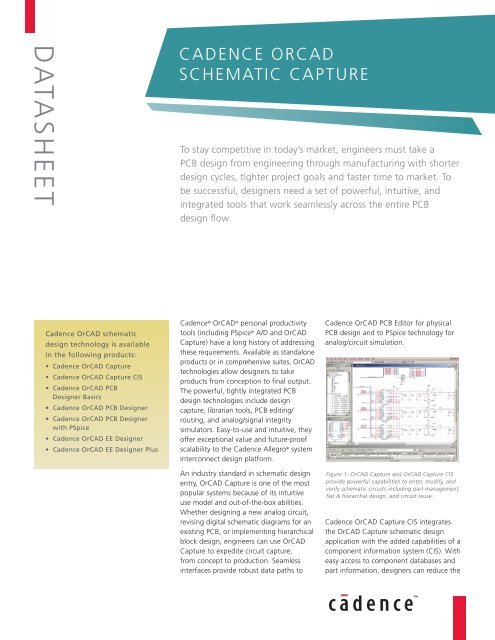

However it cannot anymore applicable to DCM. The above duty cycle is can be used also with the boundary mode. (Note: D is the boost converter duty cycle which is equal to the ratio of on time to the entire signal period.)Īssuming ideal values (diode and switch voltage drops are zero) Eq. Now go back to Figure 2, the magnitude of the inductor current during Ton and Toff is equal. Then we will eliminate the variable dt through integration from Ton to T. (Note: VL is the voltage on the inductor and this is not a drop during this time since it is reversing its polarity. The flow of current is from Vin to diode D then to the load.

The energy on the inductor will start to decay.
#Pspice schematics changing duty cycle how to#
How to Calculate the Duty Cycle of Boost Converter – Analysis during Toffĭuring Toff, the inductor reverses its polarity and the diode at this time will be forward biased and the load will be supplied by the energy in the inductor. Then we will get rid of the variable dt by integrating the equation from 0 to Ton. The voltage across inductor is also defined by below formula. (Note: VL is the voltage of the inductor and VSw is the turn on voltage of the switch.) The flow of the current is from Vin to inductor L then to switch S. Time the load is being supplied by the energy stored in the capacitor C. The diode will be reversed biased and this How to Calculate the Duty Cycle of Boost Converter – Analysis during Tonĭuring Ton, the switch S is on. When the load decreases on the other hand, the operation may enter DCM but this time the current is already very small and the danger of device stress is no longer an issue.
#Pspice schematics changing duty cycle full#
Based on experienced, a boost converter is usually set to CCM at higher loads and at full load. Apart from these, DCM may introduce problem in EMC. But in practical application, DCM operation is avoided because in this region the peak current is high and the RMS losses are high as well. However, you cannot use this duty cycle for DCM boost converter. The duty cycle of CCM and boundary mode is the same. On the other hand for the boundary mode, the inductor current is just For DCM, the inductor current is reaching zero before the next Ton occur. For CCM the inductor current will not reach zero after every switching cycle. A boost converter by the way can operate in three modes continuous conduction (CCM), discontinuous conduction (DCM) and boundary mode. Figure 2įigure 2 is an inductor waveform of a continuous conduction mode boost converter.

The inductor current waveform is then resembled like Figure 2 below. The inductor of the boost converter charges during Ton and discharges during Toff. Meanwhile, a familiar boost converter schematic is shown in Figure 1. You can get direct equation for boost converter duty cycle formula from different sites but here I will discuss how it is derived. The inductor waveform is the key on how to calculate the duty cycle of boost converter.


 0 kommentar(er)
0 kommentar(er)
